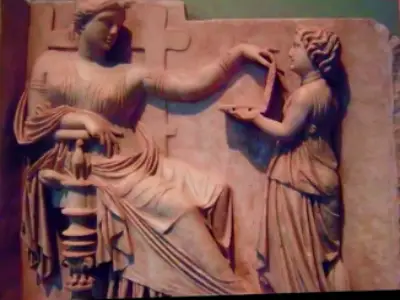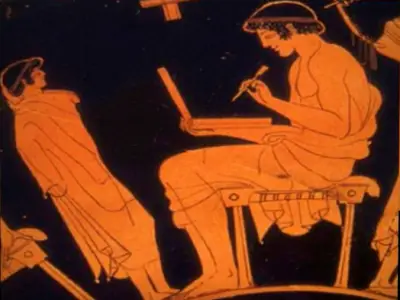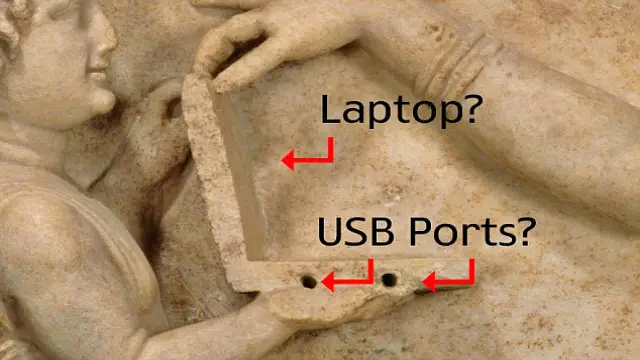Could an Ancient Greek Sculpture Depict a Laptop?
Legend has it that the Oracle of Delphi connected priests with supernatural beings. These beings supposedly passed along advanced technology and information. This idea has sparked a fascinating conspiracy theory. Some claim that a modern-day laptop is depicted in a Greek sculpture from 100 BC. However, historians argue that the sculpture simply shows a deceased woman touching a shallow chest. Let’s explore this intriguing story.
The Oracle of Delphi: A Brief Overview
The Oracle of Delphi was a significant religious site in ancient Greece. It was believed to be a place where priests could connect with the gods. The Oracle provided guidance and prophecies, often shrouded in mystery.
Key Points About the Oracle:
- Location: Delphi, Greece
- Function: Provided prophecies and guidance
- Connection: Priests believed they communicated with the gods

The Sculpture in Question
The sculpture in question is known as “Greatness.” It features an enthroned woman reaching out to touch the lid of a shallow chest held by a servant girl. This funerary relief is displayed at the J. Paul Getty Museum in Malibu, California.
Description of the Sculpture:
- Setting: The woman lounges in a cushioned armchair.
- Action: She reaches out to touch the chest.
- Historical Context: Represents Greek funerary art, symbolizing earthly pleasures in the afterlife.
The Conspiracy Theory
Some conspiracy theorists suggest that the chest resembles a modern laptop. They point out features that look like USB ports and a screen. This theory gained traction after a YouTube video was released in 2014.
Arguments for the Laptop Theory:
- Resemblance: The chest appears to have a structure similar to a laptop.
- Focus: The woman’s gaze is directed at the lid, akin to looking at a laptop screen.
- Touchscreen: Some theorists argue that her fingers seem to be interacting with a touchscreen.

The Historical Perspective
Historians and experts disagree with the conspiracy theory. They argue that the object is likely a wax tablet used for writing. Wax tablets were common in ancient Greece and were used with a stylus.
Key Points from Historians:
- Material: The object is likely a wax tablet, not a laptop.
- Design: The structure does not match known jewelry boxes or wax tablets.
- Cultural Context: The sculpture reflects traditional Greek funerary art.
The Debate Continues
Despite the historical arguments, the debate over the sculpture persists. Paranormal investigators and conspiracy theorists continue to challenge the traditional views.
Points of Contention:
- Wax Tablet vs. Laptop: Some argue that the object does not resemble any known wax tablet.
- Advanced Technology: Believers in the theory suggest that ancient civilizations had access to high-tech devices.
- Cultural Myths: They claim that myths of magical artifacts may have roots in real advanced technology.
The Role of Erich von Däniken
Erich von Däniken is a well-known figure in the realm of ancient astronaut theories. He suggests that many ancient myths involve high-tech devices given by extraterrestrial beings. Some supporters of the laptop theory reference his work.
Däniken’s Influence:
- Ancient Artifacts: He argues that many artifacts were advanced technology.
- Mythology: Suggests that myths may be based on real encounters with aliens.
Conclusion
The story of the Oracle of Delphi and the sculpture “Greatness” raises fascinating questions about ancient civilizations. While conspiracy theorists see a modern laptop in the sculpture, historians maintain that it represents traditional funerary art.
Is it possible that ancient cultures had access to advanced technology? Or is this just a case of misinterpretation?
The debate continues, inviting us to explore the mysteries of our past.

